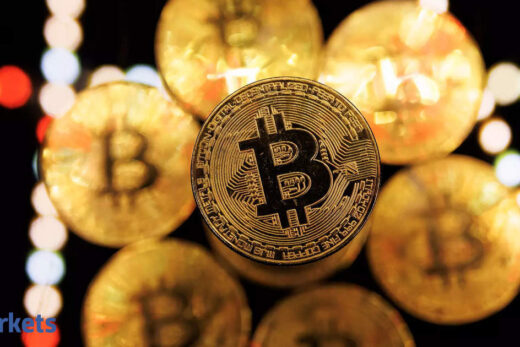You have got Brent within kissing distance of $80 a barrel. You are seeing WTI index go up. Back home the oil marketing companies have had no choice but to come out with a price hike today for petrol as well as diesel. Let us begin this interview by asking you your reaction on Brent being seen at $80 a barrel, a level we have not seen in nearly three years.
That is true that Brent has been going consistently high in recent time and it is because of two or three reasons. Number one, the strong demand recovery in Europe, in America, in Asian countries, in India and the pace of supply has not been to the same extent in spite of OPEC plus countries increasing the supply by 400,000 barrels a day.
It was coupled with around 1.5 million barrels per day capacity going out because of hurricane Ida in Gulf of Mexico. Some of the capacities are returning back but some may take more time to return back because of damages and also because some of the OPEC countries are not able to ramp up their supplies. This is also aided by around 80,000 barrels a day capacity going out from Libya recently and some skirmish in Sudan is there.
These were the combination of factors on supply and demand side. This was also aided by the high price of LNG which is likely to have some shift from gas to oil and increasing the demand for oil products. It appears that at least in this quarter the crude oil price may continue to be on higher side. Of course, it will slowly reduce as capacities in Gulf of Mexico return back.
Also on the demand side, apart from crude, gasoline demand has been high. It is to pre-pandemic level in America and Europe and in India. With the winter season coming now, diesel demand will also pick up. So the product demand is also high which is keeping the cracks high and the product prices.
You are saying this is demand led price hike that you are seeing as far as crude goes and if that is indeed the case, can crude prices go beyond $80 a barrel and at a time when you are seeing all kinds of disruptions in China too?
Actually a lot of these factors have already been accounted for, which has led to very sharp rise in the crude prices. Almost coming to $80 and unless there is a spurt of demand or there are some restrictions like we saw restriction exports from China on the product side, I think it largely accounts for the current factors. As I mentioned to you that some of the capacity which is out because of hurricane Ida in Gulf of Mexico should be returning and now another 400,000 barrels will come from the OPEC countries.
There is a serious supply chain disruption which is happening or which already has happened. how do you see and when do you see things normalising? If China wants to produce less, then the energy requirement by the largest economy of Asia starts reducing. India is coming out of a multiyear economic downturn and India will start consuming more. America is becoming very fuel conscious which means they are now implementing EST projects, they are working towards solar and they are moving towards wind. A lot of changes are happening.
There are too many things happening simultaneously. One is the sudden demand pickup in some of the countries, the larger narrative on ESG and too much focus on that is scaring people to invest in the upstream. At least European companies focus too much on renewables and some are localised decisions of individual countries. But ultimately, oil is a very widely connected commodity and many of the energy resources are also having an impact on one another.
So for example, the Indian bio fuel program. It helps in taking care of part of the intrinsic demand at least in India. Now there are too many things happening but whether all will continue to play in this faith, I do not think that is going to be the situation. Things should find their balance and ultimately its economics which plays in the analysis and so is the case with the gas pricing which is currently so high. It cannot continue to be so high because at some point of time it will get decoupled and people will start shifting to oil.
At the same time, we have seen in the past that oil prices above 80 dollars does create high motivation for shifting to other sources of energy, more investment in other sources of energy which creates a bit of a permanent destruction in the demand of oil.
In the total demand scenario, there is pent up demand which will play but it will find its balance. So I do not think that it is going to continue to be above 80 dollars for a long time but yes in the near future we can see some upsides.
As far as the supply chain is concerned, there are some temporary effects like some restrictions which are there for OPEC countries which will defer out over a period of time, the Gulf of Mexico events will get evened out, some of the countries like Libya, Iran and Venezuela continue to be an issue. If that oil comes in the market, it may have a dampening effect on the overall prices.
What happens in the near term? Will GRMs go higher, will petrochemical margins shoot up because on one side is disruption because the Chinese are not going to be giving power supply to lot of manufacturing units but on the other side, there is a breakdown of logistics, which is also leading to an artificial demand drop. On one side, the consumer is going to be consuming less and on the other side, the availability of raw material is less.
Apart from China, the consumption is not going down on oil products in the near future. The festive season is coming, recently there were monsoon so the diesel demand was lesser. Petrol demand is already above the pre-pandemic, and as of September, it is almost around 7.5% above September 2019 demand. of September. The demand is going to be there, so that will keep the diesel cracks and the petrol cracks high.
The current petrol cracks were because of good demand, pre-pandemic level demand from America and good demand from the petrochemical side, which will after sometime get stabilised on the gasoline front. As far as diesel cracks are concerned, that should continue to be strong with the festive demand coming up and winter stocking happening. That should keep the GRMs in the near future above $5 in this quarter.
We are reaching a level where petrol and diesel prices will start hurting consumers. That is a policy which the government has made and which you cannot control but a debate does start about high prices and duty in India.
This issue is widely debated. The prices have got three components; one is commodity price ,the international price, it happened to be high currently. Then there is central taxation, there is state taxation, which is amounting at the current level, almost more than 50% of the total prices.
Now if commodity prices are high, that has to be adjusted in the domestic market and the taxation is a percentage over the price, something is a fixed price. The high rate of taxation combined with the high rate of commodity and the exchange rate determine the domestic prices. That is keeping the domestic prices higher right now and we have to keep on aligning to the international prices so there are little choices to that. As far as taxation is concerned, that is a call that the government has to take. Recently there was some discussion about GST but I think it is a bit distant



